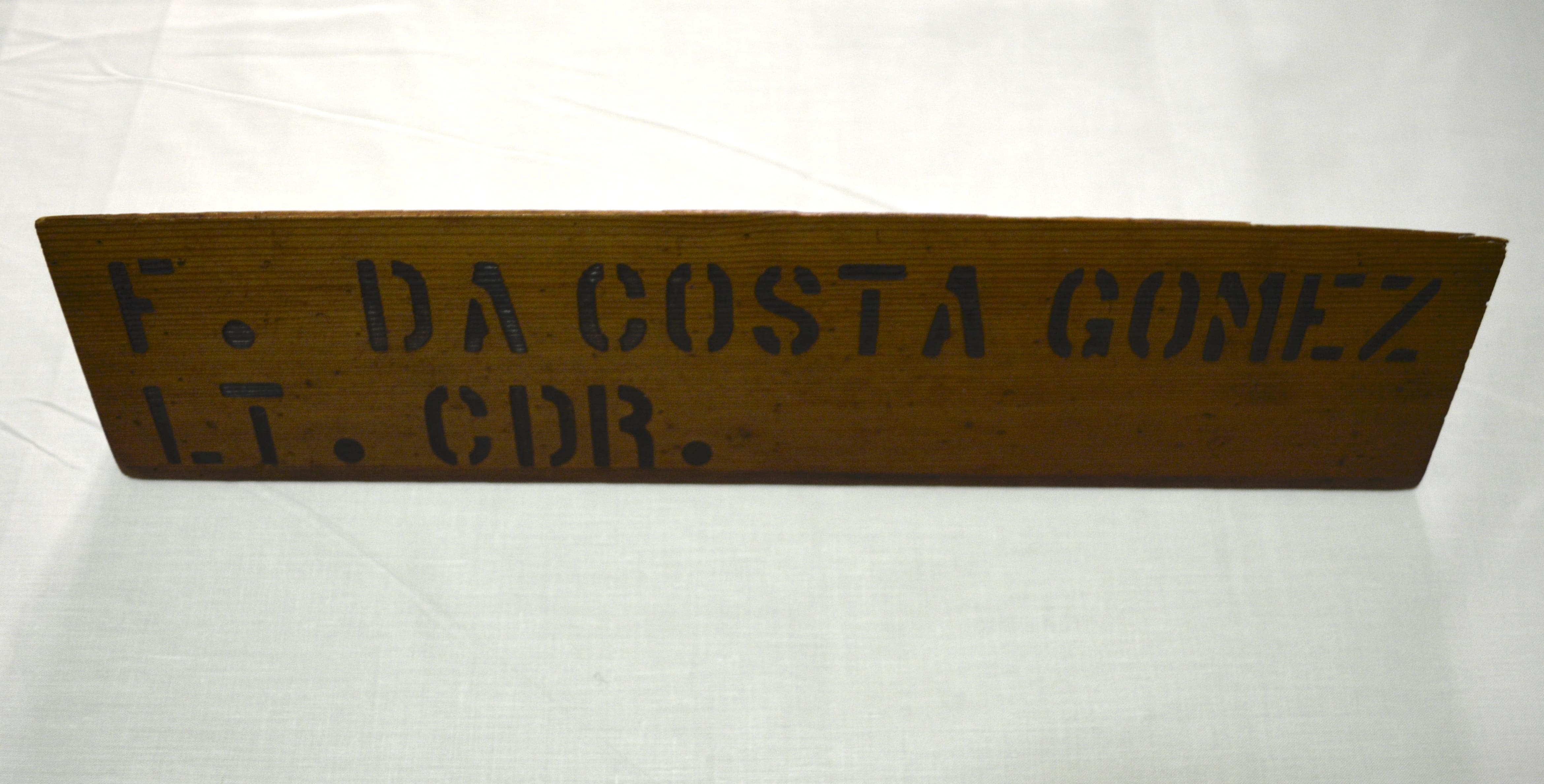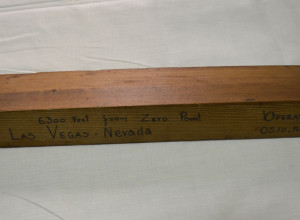
In 1951 Costa Gomes was appointed to the Army General Staff with the aim of planning the integration of Portuguese military forces into NATO. He ended up concluding that the Portuguese Armed Forces were unable to fulfil this promise, so in 1953 it was Costa Gomes himself who led military manoeuvres (for the first time in his career), with the aim of forming national units capable of joining NATO.
A year later, he was appointed to the Supreme Allied Command Atlantic (SACLANT). He then left for the USA, where, alongside General Humberto Delgado, he witnessed an experimental atomic explosion that led him to reinforce the idea that ‘atomic war was impossible’. The question of the use of atomic energy was his main area of study while he was there.
The document of the month we selected, donated by Francisco da Costa Gomes, belongs to the Centre's Museum Centre and alludes to an event that took place 70 years ago in the United States of America. It's a wooden plaque referring to the presence of Francisco da Costa Gomes at the first American atomic experiment after the Second World War - ‘Operation Cue’, which took place at 5.10am on 5 May 1955, in an area defined and designated by President Truman as the ‘Nevada Testing Site’, in the Nevada desert - Las Vegas.
Costa Gomes was invited to watch the testing of a nuclear bomb. The plaque, which reads "F. Costa Gomez LT. CDR‘, which stands for ’F. Costa Gomez Lieutenant Commander", was placed approximately 1097 metres from the explosion site.
Quoting Manuela Cruzeiro, during the lecture series ‘The Presidents of the Republic’, held at the Bernardino Machado Museum on 8 April 2005, Francisco da Costa Gomes "had witnessed in 1955 the first atomic experiment carried out in the USA after the Second World War, and had worked at NATO headquarters, coordinating plans for the use of atomic energy, an area closed to the majority of the organisation's American officers. He was, in fact, the first Portuguese to study the effects of a possible atomic war, and this was the subject of his thesis in the General Staff course, back in 1948. In the midst of the Cold War, he didn't hesitate to demonstrate the dangers to humanity of the arms race, which could lead to nuclear holocaust, as well as the irrationality of the theories of limited nuclear war..."
Watch also:
Video of "Operation Cue" (1955) available at publicdomainreview.org


